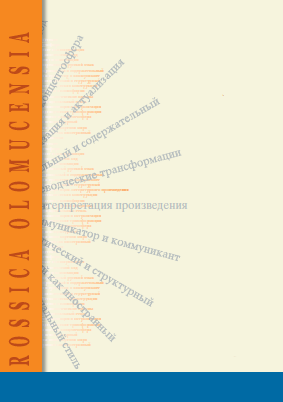Поэтий-ческий этнографизм в лирике дальневосточных эмигрантов: лекарство от ностальгии
Poetic ethnography in the lyrics of Far Eastern emigrants: a cure for nostalgia
Author(s): Anna Anatol'yevna Zabiyako, Ol'ga Yevgen'yevna TsmykalSubject(s): Russian Literature, Cultural Anthropology / Ethnology, Migration Studies
Published by: Univerzita Palackého v Olomouci
Keywords: literary ethnography;poetic ethnographism;image of perception;literature of the Far Eastern emigration;Russian Harbin;
Summary/Abstract: The article examines a special type of artistic perception of a foreign culture by the consciousness of an emigrant – poetic ethnography. The authors present it as a manifestation of artistic ethnography in a lyrical discourse. The singularity of lyrical emotion, the heightened individuality of artistic images of the perception of a foreign culture, their conditioning by certain genre and stylistic features (people’s democratic lyrics, symbolism, avant-garde; mythological plot, sketch, essay, lyric monologue, narrative lyrics, etc.), on the one hand, do not create a holistic picture, on the other hand, in capacious details and lyrical remarks they capture not only the essential characteristics of the perceived foreign cultural realities, but also characterize the recipient himself. The material of the study is the lyrics of the poet Arseny Nesmelov, the most distant from scientific ethnographism, the poet of Russian Harbin, and the image of China and the Chinese in the poems of 1926–1945. Nesmelov’s images of perception of China and the Chinese in their conceptual content are undergoing evolution – from neomythologism and spatio-temporal indifference inherent in a former metropolitan journalist – to the point of view of a “simple Harbin man in the street” and further, to a detailed penetration into the everyday psychology of ordinary Chinese (Manchus), residents Manchuria (peasants, boatmen, carters, hunghuz, “striker”). In the lyrics and epic lyre, the “Manchurian” Nesmelov very soon abandoned modernist gestures, turning in his ethnographic sketches to narrative as a way of expressing the image of perception. Here, in his arsenal – the most diverse methods of creating an imagological image: portraits, characteristics, dialogical-monologic forms, rhetorical questions, pidginized naming of Russians and Chinese, pictures from life, interspersing regional geographic comments, etc.
Journal: Rossica Olomucensia
- Issue Year: 61/2022
- Issue No: 1-2
- Page Range: 5-22
- Page Count: 18
- Language: Russian

